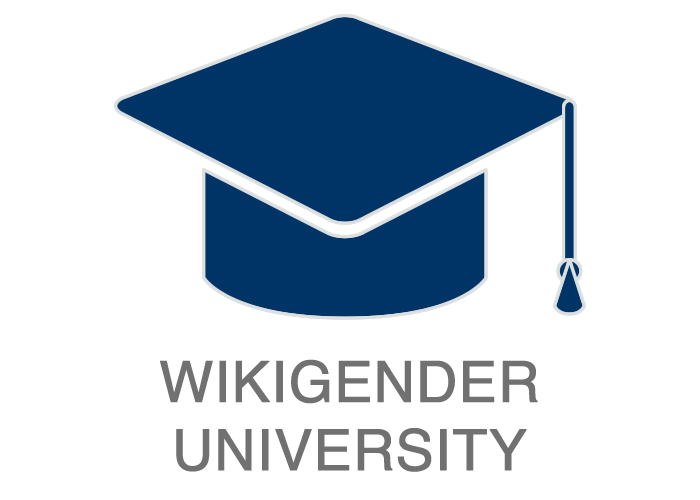Early childhood development of migrant girls in Thailand
Revision for “Early childhood development of migrant girls in Thailand” created on January 21, 2016 @ 09:24:11
|
Early childhood development of migrant girls in Thailand
|
|
<p>
 </p>
</p><div id="toc"><h2>Table of Contents</h2> <ul> <li class="toclevel-1"><a href="#w_introduction-ltrefgt-migrant-children-in-thailand-miss-out-on-early-childhood-developmenthttpblogs-vsointernational-orgind-migrant-children-in-thailand-miss-out-on-early-childhood-development-ltrefgt"><span class="tocnumber">1</span> <span class="toctext">Introduction <ref> Migrant children in Thailand miss out on early childhood developmenthttp://blogs.vsointernational.org/ind…/migrant-children-in-thailand-miss-out-on-early-childhood-development/.</ref></span></a></li> <li class="toclevel-1"><a href="#w_early-childhood-development-ltrefgtin-schoolin-society-early-childhood-development-in-myanmar-migrant-communities-in-thailand-httpwww-vsointernational-orgsites-in-school-in-society-early-childhood-development-in-myanmar-migrant-communities-in-thailand-tcm76-39034-pdf-ltrefgt"><span class="tocnumber">2</span> <span class="toctext">Early Childhood Development <ref>In school,in society early childhood development in myanmar migrant communities in Thailand http://www.vsointernational.org/sites…/in-school-in-society-early-childhood-development-in-myanmar-migrant-communities-in-thailand_tcm76-39034.pdf.</ref></span></a></li> <li class="toclevel-1"><a href="#w_references"><span class="tocnumber">3</span> <span class="toctext">References</span></a></li> <li class="toclevel-1"><a href="#w_see-also"><span class="tocnumber">4</span> <span class="toctext">See Also</span></a></li> <li class="toclevel-1"><a href="#w_group3"><span class="tocnumber">5</span> <span class="toctext">Group3</span></a></li> </ul> </div><h2 id="w_introduction-ltrefgt-migrant-children-in-thailand-miss-out-on-early-childhood-developmenthttpblogs-vsointernational-orgind-migrant-children-in-thailand-miss-out-on-early-childhood-development-ltrefgt">Introduction <ref> Migrant children in Thailand miss out on early childhood development<a href="http://blogs.vsointernational.org/index.php/2013/05/09/migrant-children-in-thailand-miss-out-on-early-childhood-development/" alt="">http://blogs.vsointernational.org/ind…/migrant-children-in-thailand-miss-out-on-early-childhood-development/</a>.</ref></h2> <p>In "Gender many young migrants are engaged in regular work, which has an impact on early childhood development. Of an estimated 2.5 million migrant workers in Thailand, at least 200,000 are children. A research study concludes that the majority of young migrant workers are from "Gender and a minority come from "Gender and "Gender . The study also estimates that five percent of this population is aged below 15 years old, 20 percent are aged 15 to 17 years and 75 percent are aged 18 to 25 years; the majority were legally entitled to work in Thailand.<br /> </p><p>The research study demonstrates that work undertaken is largely dependent on the gender of migrants. For example, all migrants employed in domestic work were female, and slightly more females than males were employed in the agriculture and manufacturing sectors. Slightly more males were employed in the fishing industry, and all of those surveyed who worked on fishing boats were male.<ref> The Mekong Challenge Underpaid, Overworked and Overlooked: The realities of young migrant workers in Thailand <a href="http://www.ilo.org/wcmsp5/groups/public/—asia/—ro-bangkok/documents/publication/wcms_bk_pb_67_en.pdf" alt="">http://www.ilo.org/wcmsp5/groups/publ…/wcms_bk_pb_67_en.pdf</a>.</ref> <br /> </p><p>  </p><p>== Migrant employment by age <ref> The Mekong Challenge
</p><p>== Migrant employment by age <ref> The Mekong ChallengeUnderpaid, Overworked and Overlooked: The realities of young migrant workers in Thailand <a href="http://www.ilo.org/wcmsp5/groups/public/—asia/—ro-bangkok/documents/publication/wcms_bk_pb_67_en.pdf" alt="">http://www.ilo.org/wcmsp5/groups/publ…/wcms_bk_pb_67_en.pdf</a>.</ref>== </p><p>Migrant child workers, categorised as being under the age of 18, are most commonly employed in the fishing industry, with almost half of those interviewed employed in this area. The manufacturing industry was the least common area in which surveyed young migrants were employed. The study concludes that this result reflects a trend in both the fishing and agriculture sectors where it is common for children to work alongside their parents, compared to manufacturing where children do not generally accompany parents to work. </p><p>A similar trend occurs in migrants aged under 15 years, which is the legal working age in Thailand and the minimum age for employment as specified in the International Labour Organization (ILO) Convention 138. Between three and four percent of migrants in this age group worked in agriculture and domestic work, while none worked in manufacturing. </p><p>On a positive note, the study found that 70 percent of all those migrants interviewed and working in the agricultural, domestic and manufacturing sectors were aged 18 years or over.<br />  </p>
</p><h2 id="w_early-childhood-development-ltrefgtin-schoolin-society-early-childhood-development-in-myanmar-migrant-communities-in-thailand-httpwww-vsointernational-orgsites-in-school-in-society-early-childhood-development-in-myanmar-migrant-communities-in-thailand-tcm76-39034-pdf-ltrefgt">Early Childhood Development <ref>In school,in society early childhood development in myanmar migrant communities in Thailand <a href="http://www.vsointernational.org/sites/vso_international/files/in-school-in-society-early-childhood-development-in-myanmar-migrant-communities-in-thailand_tcm76-39034.pdf" alt="">http://www.vsointernational.org/sites…/in-school-in-society-early-childhood-development-in-myanmar-migrant-communities-in-thailand_tcm76-39034.pdf</a>.</ref></h2> <p>It is essential to take a holistic approach to better understand migrant children’s access to basic requirements such as healthcare and education and to ensure quality early childhood development. Unfortunately many migrants live in volatile conditions with varying social and legal status; and access to child protection, education, health, hygiene and nutrition. Education has been the most important focus of the Government’s Early Childhood Development (ECD) provision. </p><p>Although there is a clear education policy that is inclusive of migrant children, full enforcement has not occurred and the majority continue to rely on Migrant Learning Centres. Achieving a high quality of education and meeting the development needs of migrant children in these centres is challenging. While teachers in Thai state schools must be trained to work in multicultural settings, those teachers working in Migrant Learning Centres require longer-term professional development on ECD. Despite these challenges, migrant parents and teachers are generally committed to the education of these young students. </p><p>Migrant children also have many challenges in accessing healthcare, which is key to achieving early childhood development. For example, many do not belong to any public or private healthcare schemes and their families are often unable to pay for treatment. Despite government efforts to increase migrant access to vaccinations, many children are not vaccinated, and therefore unprotected from known epidemics. Schools provide access to supervision while their parents are at work, a positive initiative to remove burden from working migrant parents, which also means children receive greater access to healthcare, sanitation and nutrition. There is a fundamental need to address the gap between service providers, authorities and communities; where the role of Non-Governmental Organisations (NGOs) and Community Based Organisations (CBOs) is critical to facilitating access to health care services and in some cases themselves providing these services. </p><p>To respond to these challenges a comprehensive health care policy for migrant children must be developed, implemented and enforced. <br /> </p> <h2 id="w_references">References</h2> <p><references/> </p> <h2 id="w_see-also">See Also</h2> <ul><li>"Trends </li></ul> <h2 id="w_group3">Group3</h2> <p>ECS 485 B01Current economic problems and issues<br /> The members of Group 3 are: <br /> <br /> 1.Ms.Thanchanog Satient<br /> 2.Ms.Thananan Laohasinnarong<br /> 3.Ms.Pattranit Sukumal<br /> 4.Ms.Panumart Lakthan<br /> 5.Ms.Pratinthip Inkhai<br /> 6.Ms.Benyaporn Punto<br /> (From left to right) <br /> Group3SWUYoungMigrantGirls <br /> </p><p> </p> |


